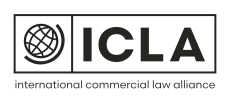WorkSafe has proposed a guideline to help persons conducting a business or undertaking (PCBU) understand and manage psychosocial risks at work. It clarifies what psychosocial risks are, why they matter, and proactive steps on how to eliminate or minimise them.
Historically, WorkSafe has not provided comprehensive mental health guidelines – rather it has focused on physical health. However, the Health and Safety Work Act 2015 (HSWA) defines health as being both physical and mental, with the guideline being produced to acknowledge and address the mental health of workers.
What are Psychosocial Risks?
The guideline defines a psychosocial risk as risk to a “worker or other person’s health and safety”, arising from a psychosocial hazard. Psychosocial risks are categorised into three hazard areas, being:
- How you work – for example, job demands, lack of job security and low role clarity.
- Who you work with – for example, poor organisational culture, lack of support and bullying.
- Where you work – for example, poor physical work environment, poor quality and equipment.
These hazards may result in serious harm either mentally – for example anxiety – or physically – for example musculoskeletal disorders.
Legal Obligation
PCBUs have a “legal obligation to ensure, so far as is reasonably practicable, the health and safety of workers, and that other persons are not put at risk by your work”.
This means all PCBUs have a legal obligation to manage psychosocial risks at work.
The proposed guideline does not aim to provide new legal obligations – however it rather serves as a guide to help parties understand their responsibilities. This draft uses the term “must” when identifying if an action is required by law and “should” when referring to the best practice to follow to enhance safety and wellbeing.
Risk Management Process
The guideline recommends a four-step approach to help safeguard mental health. These steps adhere to legal obligations, while providing risk management strategies and a practical approach for employers.
Step One: Identify hazards
Workers may be exposed to a combination of psychosocial hazards. Therefore, the guideline has created a list of information sources and trends to help identify hazards and a non-exhaustive list of hazards employees face. PCBUs should also identify protective factors that can support mental health and reduce harm.
Step Two: Assess psychosocial risks
PCBUs should carry out a risk assessment for each hazard they identify, splitting them into two components and assessing them concurrently. Firstly, the likelihood that it will happen (for example, frequency, duration and intensity) and secondly, the consequence if it happens.
Step Three: Manage the risk
The primary goal of PCBUs is to eliminate risk. If this is not possible, psychosocial risk needs to be minimised so far as reasonably practicable using control measures. Suitability of control measures will fluctuate based on things such as business size, worker needs and type of work. The guideline offers different risk management strategies for a variety of different control measures.
This draft recommends three levels of intervention which target different stages of the hazard – enabling PCBUs to implement a practical solution at any level:
- proactively protect (primary)
- support during (secondary)
- recovery from harm (tertiary).
Step Four: Review control measures
The guideline recommends that control measures be continually and regularly monitored to ensure they are effective, that hazards are not reoccurring, and that actions are appropriate.
Author: Kaitlin Windmeyer



